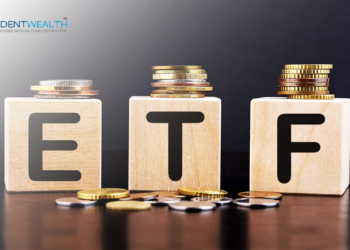Saving and investing money becomes easier when we have a goal in mind, whether it’s for a house, retirement, our children’s education, or their marriage.
In the case of children’s education, the first thing that springs to mind is how much money we will need to do so. The goal may be 10 to 15 years away, so how shall we determine the amount today?
The situation becomes more complex as different educational courses and choices of study will require varying amounts. So, how do we calculate it?
The correct approach is to look for the best opportunities that you would want to provide your child, whether they would study in India or abroad. Besides, you’d also have to think about the cost of living. Once you’ve calculated the current cost, you’ll need to adjust the expense with inflation.
Say, the cost of studying a 4 years B. Tech program with living expenses is 16 lac, the inflation rate is 6%. How much money would you require after 10 years?
The amount required after 10 years would be Rs. 28.65 lacs.
The rate of inflation is a crucial factor to consider while planning for it, as educational inflation is far higher than consumer inflation, so it would be prudent to apply different adjustment rates. Further, different countries will have altogether different rates of inflation. You must also consider this if you intend to send your children abroad.
For e.g. the rate of educational inflation is around 10-12% in India, whereas the household inflation is around 6 %. In order to calculate the future value of the educational expenditure, you will need to adjust Educational Fees with the educational inflation rate and living expenses with the household inflation rate.
| Particular (A) | Amount |
| Living Cost | 4 lac |
| Household Inflation | 6% |
| Future Value | 7.16 lac |
| Particular (B) | Amount |
| Tuition Fees | 12 lac |
| Educational Inflation | 12% |
| Future Value | 37.27 lac |
After applying the different rates of inflation the total amount would be Rs. 44.43 lacs.
Another overlooked factor is the exchange rate. If you look at the exchange rate today, 1 USD = 74.12 INR but, in 1947, 1 USD was equivalent to 1 INR. So, you can see how expensive it has become to spend in US dollars over the years.
There can be two ways of adjusting the Exchange Rate difference:
- Exposing your investment to a Global fund.
- Adjusting for the cost of Exchange difference in a similar way as inflation.
When you’ve finally worked out how much you’ll need. You begin investing in your children’s education.
Now the question is, where to invest?
You can invest in Mutual Funds regardless of your duration; the longer your term, the more equity exposure you can have; if your duration is short, you should expose your portfolio to debt schemes.
If you invest in a mutual fund for your children’s education, you will likely receive a higher return adjusted for inflation and will be able to meet your financial goals.
What if you fall short?
In case you fall short, there are affordable educational loans that can be looked at.
Conclusion:
Educational Expense is one of the most ignored aspects of Indian households’ financial planning but, with the inclusion of financial literacy, people are now actively participating. One thing that should be taken care of is, investors often invest without proper planning, this could actually be detrimental and put your financial goal off track.
Written by: CA Suraj Kar
To learn more, get our Journal: PW Insider for FREE!
Read Next: Vedant Fashion IPO: Should you invest?
For more information, reach us at [email protected]
Team, MyGoalMySip.











